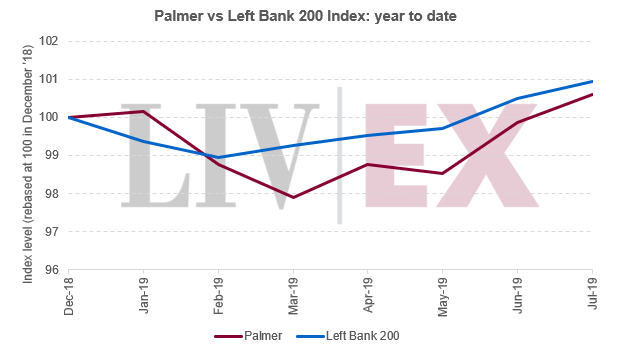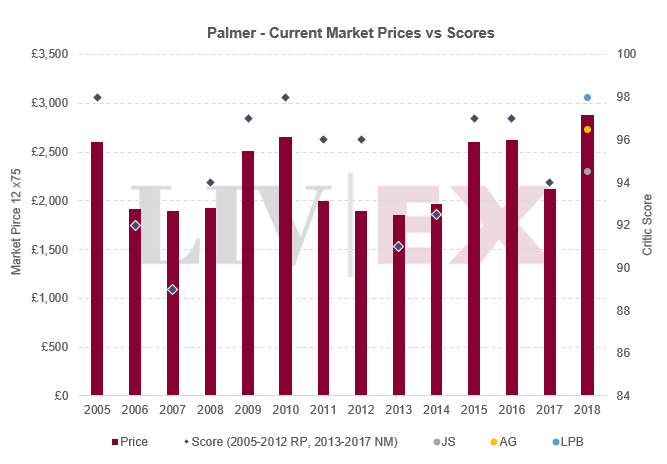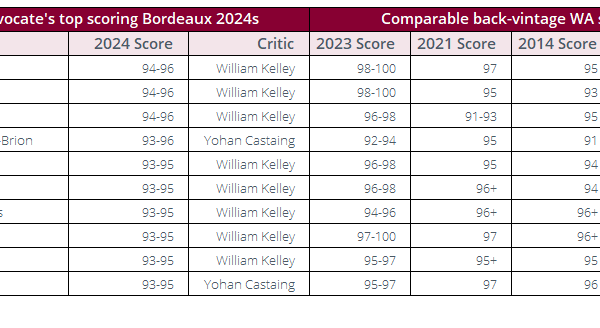
Owner: Sichel and Mahler-Besse families
1855 Classification: Third Growth
The Liv-ex Classification 2019: Second Tier
Vineyard area: 66 ha
Colour: Red
Grape varieties planted: 47% Cabernet Sauvignon, 47% Merlot, 6% Petit Verdot
Other wines: Alter Ego Palmer
History

A portrait of General Palmer
Chateau Palmer was conceived in the early 19th century when a successful and notoriously alluring English General met a wealthy young widow on a stagecoach journey across France. The chance meeting saw General Charles Palmer (who was returning from the Battle of Toulouse) purchase a portion of land from Marie de Gascq for 100,000 francs, thus laying the groundwork for what was to become one of Bordeaux’s most distinguished estates.
Despite his enthusiasm and generous investment, Palmer’s ambition recalled him to London, where he used his persuasiveness and charm to promote “Palmer’s Claret” in gentlemen’s clubs. Having expanded his property to cover 163 hectares, however, Palmer’s no-expense-spared approach to expansion and varietal experimentation eventually caught up with him, and in 1843, with his finances and marriage in disarray, the general was forced to sell the estate (though it retained his name).
In 1853, Chateau Palmer was bought by Isaac and Emile Perreire – two successful French bankers who had played a central role in Napoleon’s remodelling of Paris and in the development of the illustrious Arcachon resort near Bordeaux. With more than a small fortune in hand, the brothers quickly set about improving the vineyards, though the fruits of their labours were not fully realised until after the 1855 classification. Their efforts (which included the construction of the current chateau) eventually saw Palmer celebrated as one of Margaux’s finest wines, but disease, war and economic depression led to the sale of the property in 1938.
The Palmer estate, though largely depleted, was purchased by four prominent Bordeaux families who set up the Societe Civile de Chateau Palmer. Two of these families, Sichel and Mahler-Besse, continue to head the winery today. Over the past few decades, Palmer has reclaimed its former position as a leading Bordeaux chateau, aided (since 2004) by winemaker Thomas Duroux.
Market Performance

Over the past ten years, the Palmer index, which tracks the price movements of the last ten physical vintages, has broadly followed its parental index, the Left Bank 200, without experiencing its level of volatility. It diverged from its peer group mid-2014; Palmer has risen 89%, compared to 74% for the Left Bank 200 since 2009.
So far this year, however, its performance has been less steady, rising a mere 0.6% compared to 1% for the Left Bank 200. Palmer started to make gains again following the En Primeur campaign, which generated interest in the brand. The 2018 Palmer release was one of the success stories of the vintage. Despite commanding a higher price than all other Palmer vintages available on the market at the time, its tight production volumes and effusive critical praise turned it into a highly desirable collector’s item and one of the notable sell-outs.

Palmer rising
Palmer climbed the rankings in last year’s Power 100 – our annual list of the most powerful brands in the fine wine market, when the Left Bank estate leaped 17 spots to 14th place.
It was also placed in the second tier of The Liv-ex Classification 2019, which ranks the wines of the world by their average trade price – a methodology inspired by the historical Bordeaux classification, which gave Palmer a Third Growth status.
Market Prices
The chart below compares its Market Prices against our ‘Benchmark Critic’ series, which account for the scores of Robert Parker (2005-2012), Neal Martin (2013-2017) and Lisa Perrotti-Brown, Antonio Galloni and James Suckling for the 2018 vintage.

The most expensive physical vintages are the ones considered “on-vintages” across Bordeaux – 2005, 2009, 2010, 2015 and 2016 – and boast a score of 97 points and above.
Prices for Palmer show a 78.6% correlation to ‘Benchmark Critic’ scores. According to our ‘Fair Value’ methodology, the 2012 offers very good value for money with 96 points from Robert Parker and a price tag of £1,900 per 12×75. Other vintages that look attractive but cost more include 2005 and 2010. The most recent release stands above the trend line yet the very low production volumes justified its price tag for eager collectors.

Vintage Performance

The table above displays the annual price change of the last eleven physical Palmer vintages. Over the past year, the 2014 has risen the most, up 9.4%. The 2016 has also appreciated in value (5.1%). Despite its relatively attractive price, the 2007 is the biggest faller, down 3.8%. The 2017 has also dipped by 3.8% but continues to be positioned above its implied ‘Fair Value’ line.
[mc4wp_form id=”18204″]



